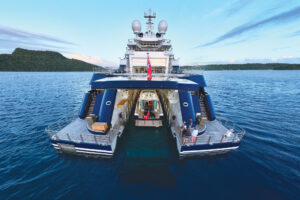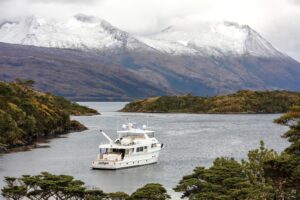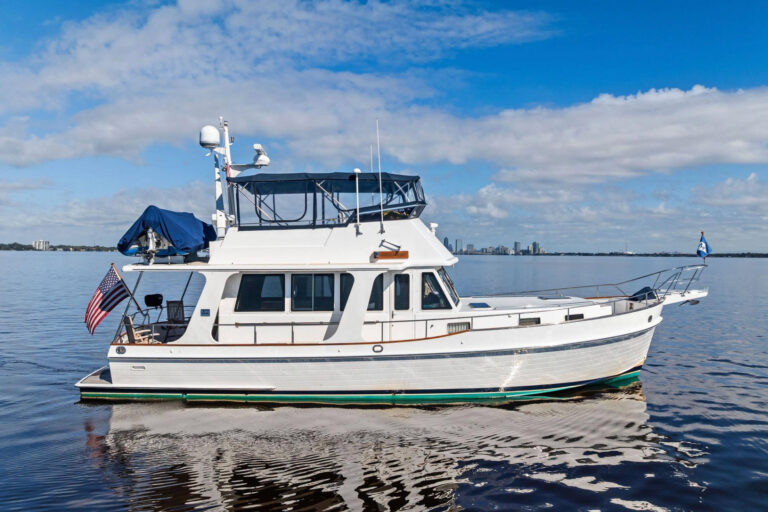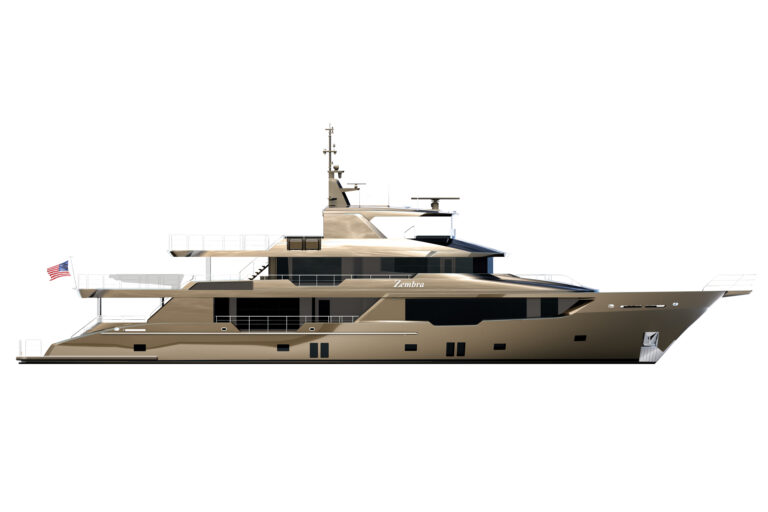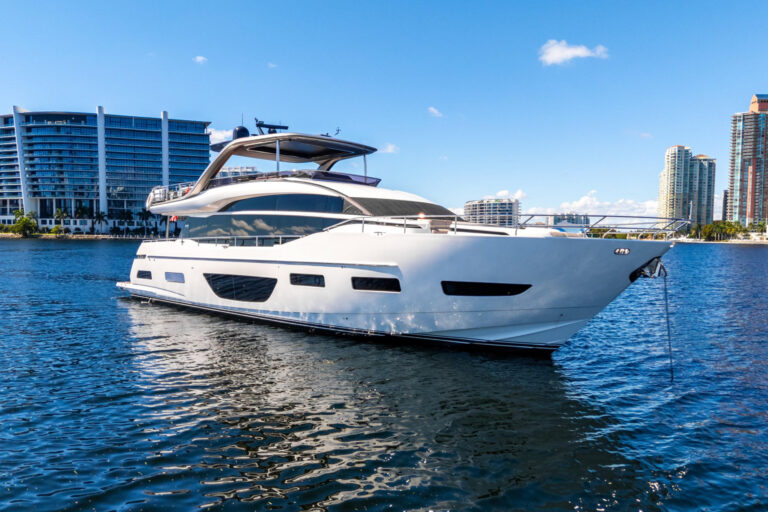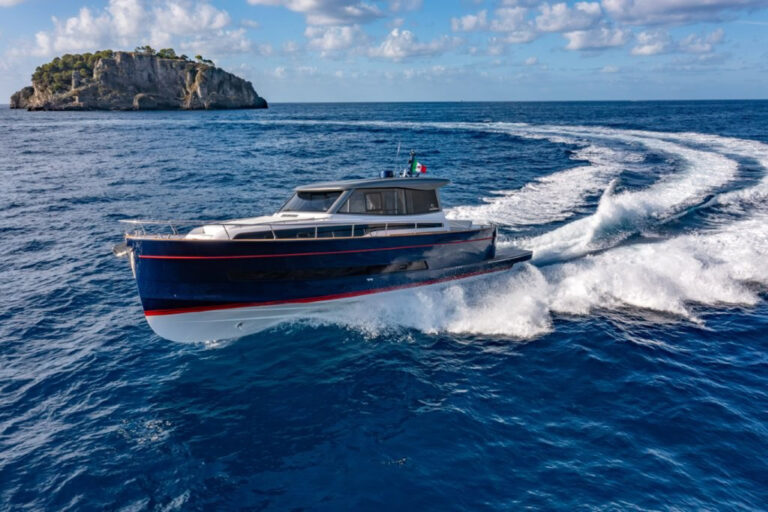June 10, 2010
45°04.’241S 054°14.’142W
We are about 400 miles off the coast of Argentina, making about 10 knots in 25 knots of wind on a northeasterly course. We are heeled well to starboard, so getting out of bed or moving around the boat becomes a kind of jerky ballet—choreographed, but not all that graceful. The good news is, this kind of motion is just great. We’re sailing fast and we’re not getting bashed around like we were between Stanley and Carcass Island or between the Straight of Le Maire and Stanley. Our decision to cut and run for Buenos Aires on the early side is looking very smart. We have a great head start on the strong northerlies that are coming and our course, while slightly out of the way, is fairly genius in terms of skirting the winds. At some point, we’ll have to tack and head west for Buenos Aires, but the worst of the weather should have moved past by then. We may face 12 hours of discomfort, but that’s okay—five or six days would have been brutal.
The atmosphere aboard is lighter in this good weather and people’s thoughts are naturally turning to home or wherever else they’re off to next. As for me, I am eager to get back, but also sad that this amazing trip is coming to an end. It’s been full of surprises. I expected to be cold, possibly very cold—and I hate that. Except for the snowy horseback ride in Chile, when I got wet, I was never as cold as I remember being on many occasions in upstate New York. Long underwear and layers, as well as good technical gear—my DuBarry sea boots, polarized glasses and goggles from Australian manufacturer Barz Optics, Omni Heat clothing from Columbia, and Under Armour boot socks, kept me ready for anything and toasty. The Suunto Elementum Ventus wristwatch, with its barometer and compass, was fantastic. I didn’t just wear it—I used it, all the time. And being able to keep in touch with the Iridium 9555 was a real luxury.
I had high expectations for Cape Horn, of course, and I wasn’t disappointed. We were unbelievably lucky with the weather, but the low, dark sky and large swells on a nice day were enough to remind us of how hellish this passage must be when the winds are howling. Cape Horn is something every mariner should see at least once. There are no complete records of how many souls have been lost here, but consider the San Telmo, a Spanish frigate that went down in 1819 with 622 people on board. Or the O’Higgins, which sank in 1826 with 506 people aboard. If the weather didn’t get you, the wreckers—pirates that would force a transiting ship onto the rocks to pillage her goods with no regard for human life—were very likely to try. Maybe this is why Cape Horn has a haunted, lonely, and mournful air. As you pass it, it seems only natural to pay your respects.
What I really didn’t expect to find enthralling was the Beagle Channel. It is surely one of the most gorgeous cruising areas in the world. The majestic glaciers and serene anchorages are endless and the protected waters of the Beagle branch out on both sides with other channels to explore. We didn’t see a single boat in a week of cruising, although it is winter here, and very few people brave Tierra del Fuego this time of year. This isn’t an area to visit lightly. A steel or aluminum boat, good charts and navigation skills, local knowledge, and strong seamanship skills are a must. The winds rush down the glaciers with tremendous force and there wasn’t a caleta we visited without taking four lines ashore, to back up the anchor.
The wildlife was a highlight, for sure. Orcas, dolphins, guanaco, Fuegian foxes, albatrosses, caracaras, and penguins—all so close you could practically touch them—yielded not just incredible experiences, but great photo ops. I brought along my own Canon point and shoot, but quickly abandoned it for the Pentax K-7, which has a rugged, water resistant housing, is easy to use, and takes stunning photos.
The best thing about this trip is that you can do it, too. There are only a couple of charter operations qualified to operate in this part of the world, and I can’t recommend Pelagic Australis highly enough. This simple boat is comfortable and built like a tank. It’s warm and dry and provisioned like a fine restaurant. It’s a hands-on experience, and not a luxury cruise: guests chip in with managing the sails, cooking, and cleaning, but that just adds to sensation of active adventure. If you’ve ever wanted to do something completely different and unforgettable with family or friends, chartering this boat and its experienced and knowledgeable crew should be at the top of your list. In addition to their Beagle Channel and Cape Horn destinations, they make trips to Antarctica and South Georgia, as well. These are the last untrammeled parts of the world, so see them while you can. For more information, check out www.pelagic.co.ok

